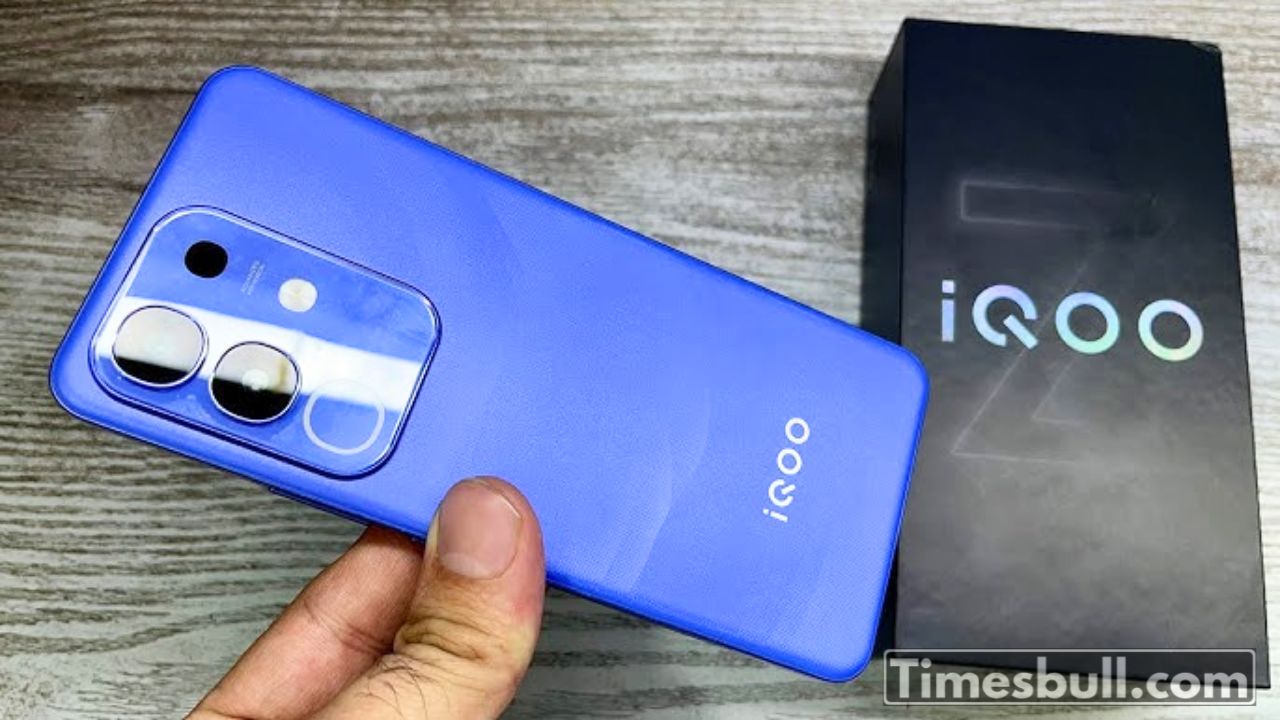iQOO Z10x: The trend of premium features in budget smartphones started a few years ago and is still going strong. People who once bought phones under Rs. 15,000 are now willing to pay over Rs. 20,000, as long as the phone offers good value. This means decent cameras, faster charging, better displays, and more. Phones like the Realme 9 Pro+ meet these expectations in the lower mid-range.
Adding 5G connectivity to budget phones, often called the ‘5G Tax,’ led to simpler devices with fewer cameras, basic plastic designs, and average battery life. These phones mainly offered 5G for tight budgets and nothing extra. However, this is slowly changing.
Now, some phones like the Poco M7 Pro and CMF Phone 1 offer more than just basic 5G under Rs. 15,000. After launching the simple Z9x last year, iQOO’s new Z10x is moving in a better direction by adding more features. But does it compromise anywhere to do this?
Design: What’s Up With That Camera?
The iQOO Z10x tries to stand out more than the Z9x. It still uses plastic for the back and frame but feels better built. The phone has flat sides with rounded edges on the back, making it comfortable to hold, which is important because it’s a bit heavy at 204 grams. The lavender Ultramarine color isn’t my favorite, but the subtle wave pattern on the back gives it a special touch. Plus, the frosted plastic doesn’t attract smudges or dust.
The camera module looks busy and sticks out quite a bit, causing the phone to wobble when placed on a flat surface. Surprisingly, there’s only one real camera at the back. The other ‘cameras’ are a 2-megapixel depth sensor for portrait shots and an infrared (IR) blaster.
The IR blaster’s placement in the camera module is odd. Usually, it’s on the top edge to point directly at the devices you want to control. Here, you have to hold the phone with one hand pointing backward and use the other hand to operate the remote app, which is awkward. It seems like the placement is more for looks, to make the camera setup seem more advanced.
The camera module also includes a Dynamic light, borrowed from Vivo’s Y series. This acts like a notification LED for calls, messages, music, and battery status, with three preset colors. It’s useful, especially for seeing charging status when the phone is face down. Oddly, the settings for this feature are hidden deep in the menu.
The Z10x has an IP64 rating, meaning it’s dustproof and splash-resistant but not waterproof. However, the warranty doesn’t cover water damage, so be careful. It’s also MIL-STD-810H certified, so it can handle extreme temperatures and conditions.
Display: Gets the Job Done
The phone has a 6.72-inch full-HD+ LCD with a refresh rate that can switch between 60, 90, and 120Hz. The screen gets bright enough outdoors and shows vibrant colors in the default mode, though colors look more natural in the Professional mode. Being an LCD, it doesn’t have deep blacks like AMOLED screens found on some competitors. It supports Widevine L1, so you can watch HD content on streaming apps.
Surprisingly, there’s an Always-on Display (AOD) feature, which usually drains battery on LCDs since the whole backlight stays on. But here, the AOD only activates when notifications arrive or when you wake the phone, which helps save power.
Software: Standard Stuff
The phone runs Android 15 with Funtouch OS 15. This OS has added some AI tools and new customization options, but the image editing tools aren’t very powerful yet.
There is some bloatware and third-party apps, but you can uninstall most of them. I noticed only a few annoying notifications, mostly from the Browser app, which pushes alerts even if you never open it. Avoiding the V-Appstore also helps reduce unwanted notifications.
iQOO usually delivers updates reliably for its premium and mid-range phones, but budget models like this one get updates slower. The promise of two years of OS updates may worry users who keep their phones for a long time. Still, since it ships with Android 15, it will likely get updates to Android 16 and maybe 17.
Performance: As Good As It Gets
The Z10x runs on a MediaTek Dimensity 7300 chipset with 6 or 8GB of RAM and up to 256GB storage. While Funtouch OS runs smoothly on higher-end phones, here the software feels a bit rough. I noticed some stuttering when scrolling or opening apps, suggesting the software isn’t fully optimized for this hardware, even on the 8GB RAM model.
The stereo speakers sound treble-heavy and aren’t very loud. There’s an Audio Booster mode that increases volume a lot but makes the sound tinny. The phone doesn’t have a 3.5mm headphone jack anymore, so wireless earbuds are the way to go.
The phone doesn’t heat up much, even when using the camera. It uses graphite sheets for cooling but doesn’t have a vapor chamber, which is understandable at this price.
In benchmarks, the Z10x performs well compared to competitors like the Poco M7 Pro and CMF Phone 1. Gaming is decent too; you can play Call of Duty: Mobile on Very High settings, though the frame rate isn’t always steady. For smoother gameplay, lower graphics and frame rates work better.
Cameras: Same Old Story
The phone has one main 50-megapixel camera with autofocus and a 2-megapixel depth sensor for portrait shots. The front camera is 8 megapixels.
Photos taken in daylight are average. They look okay on the phone screen but lose detail when zoomed in. Dynamic range is decent, but there’s noticeable noise and some odd patches with poor detail. Moving objects often blur, and fine details like leaves get lost.
Selfies are average, sometimes a bit soft. The camera struggles with exposure in very bright conditions. Low-light selfies aren’t great, even with the screen flash.
Video quality is basic with limited dynamic range and jerky motion because there’s no optical image stabilization. The phone also struggles to keep focus when panning.
Battery: Impressive!
The Z10x has a large 6,500mAh battery and supports 44W wired charging, with a charger included.
In battery tests, it lasted over 24 hours in the PC Mark Work test and nearly 38 hours playing video on loop. This is better than last year’s Z9x. In real life, heavy use still left around 40% battery at the end of the day, so it should last more than a day with heavy use and up to two days with light use.
Charging isn’t the fastest due to the big battery. It reached 38% in 30 minutes, 74% in an hour, and fully charged in about 1 hour 36 minutes, which is acceptable.
Verdict
The iQOO Z10x shows that the brand hasn’t cut corners. It improves on the previous model, especially with its big battery, but falls short in some areas like software optimization and camera quality.
The Poco M7 Pro remains a strong competitor with its AMOLED display and OIS camera for sharper photos, starting at Rs. 13,700. The CMF Phone 1 also offers a Super AMOLED screen and better cameras, plus a modular design for DIY fans.
Overall, the Z10x is a solid budget option with great battery life but could use better software and camera performance.










